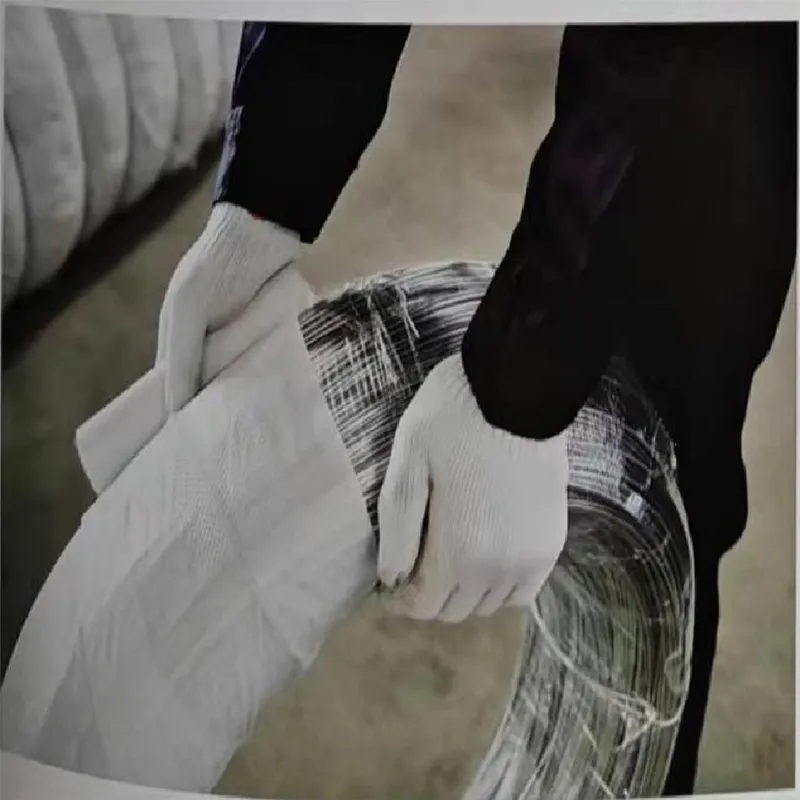-
 Phone:
Phone: -
 Email:
Email:

concrete tie wire
The Versatile Uses of Concrete Tie Wire
Concrete tie wire, often referred to as rebar tie wire, plays a significant role in the construction and manufacturing industries. This essential tool aids in reinforcing and securing concrete structures, thereby enhancing their durability and stability. Made from steel, concrete tie wire boasts impressive tensile strength, making it especially useful in various construction applications. In this article, we will explore the characteristics, benefits, and diverse uses of concrete tie wire in construction projects.
Characteristics of Concrete Tie Wire
Concrete tie wire is typically made from low-carbon steel, allowing it to possess optimal flexibility and strength for applications involving rebar. Its wire gauge can vary, usually ranging from 16 to 20 gauge, with wider gauge wires providing better binding capabilities while finer gauges allow for greater maneuverability. Most tie wires are coated with a rust-resistant material to enhance their longevity, especially when used in outdoor projects or areas exposed to moisture.
One of the most notable characteristics of concrete tie wire is its ability to maintain tension. This quality ensures that the rebar remains securely bonded to the concrete structure during the curing process and while under stress. The flexibility of the wire also allows for easy installation and adjustments, making it an indispensable component in reinforcing applications.
Benefits of Using Concrete Tie Wire
1. Structural Integrity The primary benefit of using concrete tie wire is its contribution to the overall structural integrity of concrete assemblies. By firmly securing rebar mesh and rebar bars, the wire helps to prevent shifting and displacement during the setting process, ensuring better distribution of weight and stress.
2. Cost-Effective Concrete tie wire is relatively inexpensive compared to other materials used in construction. Its low cost makes it accessible for both small-scale and large-scale projects, helping to keep budgets in check without compromising on quality.
3. Ease of Use The lightweight and flexible nature of concrete tie wire allow for easy handling and installation. It can be quickly cut, shaped, and tied, making it an efficient addition to construction teams' toolkits.
concrete tie wire

4. Corrosion Resistance As mentioned, tie wires are often treated to resist rust and corrosion. This resistance ensures longevity and reduces the need for maintenance or replacements, further enhancing the cost-effectiveness of using concrete tie wire.
Applications of Concrete Tie Wire
Concrete tie wire finds application in a multitude of construction projects. It is prominently used in
1. Reinforced Concrete Structures The core application of concrete tie wire is in reinforced concrete structures, where it binds rebar to provide added strength. This is essential for large-scale constructions like bridges, buildings, and highways.
2. Fencing and Landscaping Concrete tie wire is also valuable in landscaping projects and when constructing fences. The wire can securely tie the components of wooden or metal fences, providing stability and longevity.
3. Poured Concrete Forms In the casting process of concrete, tie wire is used to hold various parts of the forms together, ensuring the concrete remains uniformly placed during pouring and setting.
4. Utility Supports Tie wire can be used to secure the utility lines during installation. It helps in fastening conduit and plumbing lines, preventing movement and damage during and after the installation.
Conclusion
Concrete tie wire is a fundamental component in the construction and manufacturing industries due to its reliable strength, flexibility, and ease of use. Its primary role in reinforcing concrete structures not only enhances their durability but also contributes significantly to the efficiency of construction projects. Whether used in large infrastructure developments or smaller landscaping tasks, the importance of concrete tie wire cannot be understated. As construction demands evolve, so does the innovation surrounding tie wire, ensuring it remains a staple in building robust and resilient structures for the future.
-
Wire Mesh for Every Need: A Practical SolutionNewsJul.25,2025
-
Steel Fences: Durable, Secure, and Stylish OptionsNewsJul.25,2025
-
Roll Top Fencing: A Smart Solution for Safety and SecurityNewsJul.25,2025
-
Cattle Farm Fencing Solutions for Maximum SecurityNewsJul.25,2025
-
Affordable Iron Binding Wire SolutionsNewsJul.25,2025
-
Affordable Galvanized Wire SolutionsNewsJul.25,2025
-
Wire Hanger Recycling IdeasNewsJul.25,2025








